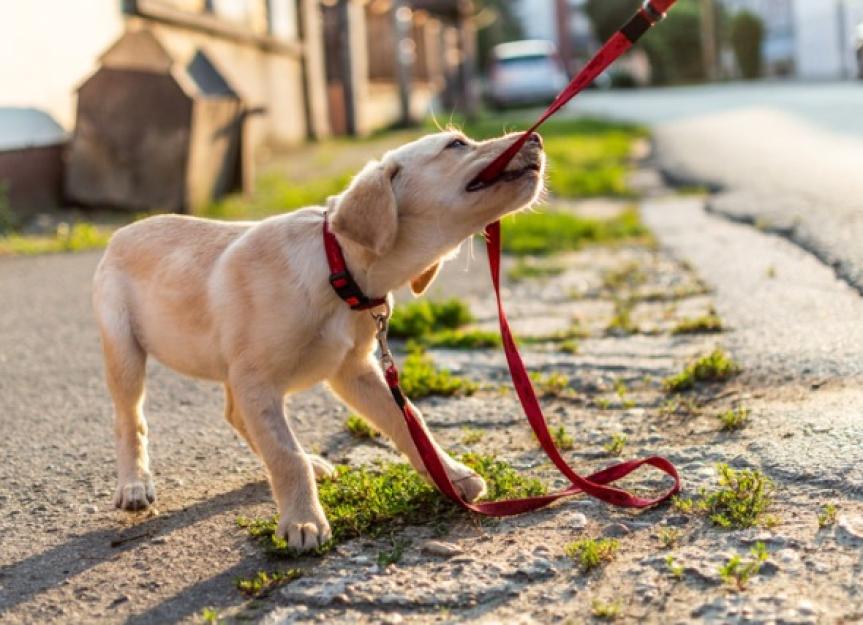Top Puppy Training Methods to Make Certain a Mannerly Pet
Efficient young puppy training is crucial for growing a well-behaved companion, and various strategies can substantially influence a dog's advancement. As we explore these approaches additionally, it ends up being clear that the success of puppy training pivots on a combination of strategies that can change your animal's behavior in remarkable methods.
Positive Support Techniques
Making use of positive reinforcement strategies is vital for effective young puppy training, as it encourages wanted actions with benefits as opposed to punishment. This method takes advantage of the natural understanding processes of pet dogs, reinforcing etiquette by giving substantial and immediate incentives, such as treats, appreciation, or play. By linking positive results with specific actions, pups are a lot more likely to repeat those habits in the future.
Effective positive reinforcement includes timing and uniformity. Incentives need to be offered instantly after the preferred habits takes place to develop a clear link in the pup's mind. Additionally, varying the kinds of benefits can preserve a puppy's interest and inspiration throughout the training procedure. As an example, some puppies may respond much better to verbal praise while others may prefer a favored plaything or reward.

Consistency in Educating Commands
Maintaining uniformity in training commands is vital for strengthening the lessons found out through positive reinforcement strategies. Pet dogs grow on routine and predictability, so making use of the same verbal commands and hand signals for certain actions is important. This harmony aids puppies comprehend what is anticipated of them, reducing confusion and irritation for both the trainer and the pet.

Timing likewise plays a significant role in uniformity. Commands ought to be delivered without delay during training sessions and followed immediately by favorable reinforcement, such as treats or appreciation. This immediate feedback assists strengthen the association between the command and the wanted habits.
Incorporating uniformity right into training sessions will develop a steady learning setting, promoting quicker proficiency of commands. Ultimately, a well-structured strategy fosters a solid bond between the young puppy and its owner, causing a more obedient and mannerly pet.
Socializing With Other Pet Dogs
Socialization with various other animals is critical for a puppy's growth, as it helps them discover appropriate habits and interaction skills in diverse social contexts. Early communications with various pets can considerably affect a puppy's character and flexibility in numerous situations. When young puppies are revealed to a selection of animals, they end up being extra confident and less afraid, which can stop possible behavioral problems later on in life.

Teach your young puppy to recognize signals from other family pets, such as indications of playfulness or pain, promoting shared respect and understanding. Normal socializing not just enhances your young puppy's social abilities but additionally contributes to their general health, producing an extra harmonious living setting.
Crate Training Conveniences
Recognizing the many benefits of cage training can greatly improve both the pup's and owner's experience. Crate training offers a protected and secure environment for puppies, ensuring they really feel shielded when left alone. This sense of protection can dramatically decrease anxiousness and stress degrees for both the animal and the owner.
In addition, pet crates act as a useful housebreaking tool. Young puppies naturally prevent dirtying their resting location, therefore encouraging them to hold their bladder until they are let outside. This impulse can speed up the house-breaking procedure, promoting excellent behaviors early on.
Crate training also aids in managing a puppy's behavior when without supervision. By giving a marked room, a fantastic read proprietors can stop harmful habits, such as eating on furnishings or getting involved in unsafe materials. In addition, dog crates can be valuable throughout travel, supplying an acquainted area that can help calm a pup in brand-new atmospheres.
Last but not least, developing a dog crate routine encourages freedom, enabling puppies to find out exactly how to be alone without fear. Generally, cage training is an Full Article effective approach for promoting technique, serenity, and safety and security, leading to a well-adjusted, well-behaved pet dog.
Leash Training Basics
Leash training is a fundamental element of responsible family pet possession that guarantees a secure and satisfying strolling experience for both the puppy and its owner. Correct chain training begins early, preferably throughout the puppy's socialization duration. This training helps establish great practices and advertises favorable behaviors when out in public.
To begin, pick a comfortable collar or harness that fits your pup well. Connect a tough leash, ensuring it is not also long, as this can bring about pulling and unpredictable actions. Beginning in a quiet atmosphere to lessen disturbances and progressively introduce your puppy to new surroundings.
Use positive reinforcement strategies, such as treats and praise, to encourage your puppy to stroll close to you. If your pup draws, stop walking and wait for them to return to your side before proceeding.
Additionally, incorporate brief training sessions with enjoyable disturbances to construct your young puppy's focus. With dedication and perseverance, chain training will certainly lead to a hospitable buddy, making walks enjoyable for both the pup and the proprietor.
Conclusion
In conclusion, utilizing efficient pup training techniques is critical for establishing a mannerly pet. Generally, these approaches collectively promote an unified relationship between pups and their proprietors.
As we explore these techniques better, it becomes clear that the success of young puppy training pivots on a combination of methods that can change your pet's behavior in exceptional means.
Utilizing positive reinforcement methods is essential for try this web-site efficient young puppy training, as it urges wanted behaviors through benefits rather than punishment.Crate training additionally helps in handling a pup's actions when unsupervised.Leash training is an essential element of liable pet dog possession that makes sure a enjoyable and safe walking experience for both the puppy and its owner.In verdict, using reliable pup training strategies is crucial for developing a well-behaved pet dog.
Comments on “Common Mistakes to Avoid in Puppy Training and How to Correct Them”